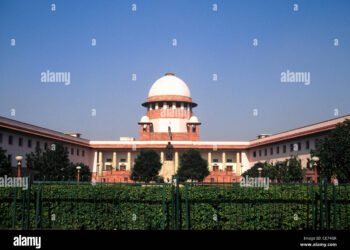Gogoi argued that the phrase is a well-known reference to the 1989 Logain massacre in Bhagalpur, where over 100 Muslims were killed and their bodies allegedly hidden beneath cauliflower fields.
BY PC Bureau
November 12, 2025: Assam Congress MP Gaurav Gogoi’s criticism of state Cabinet minister Ashok Singhal has reopened uncomfortable questions about the depth of political insensitivity and the strategic deployment of communal memory in election-season messaging. What might appear at first glance as a casual social-media jibe—Singhal’s post showing an image of cauliflower fields captioned “Bihar approves gobi farming”—has, in fact, evoked one of the most disturbing episodes in modern Indian history: the 1989 Logain massacre in Bhagalpur, where over a hundred Muslims were killed and allegedly buried beneath cauliflower patches.
For Gogoi, the minister’s choice of imagery is not accidental. It is a deliberate descent into the kind of coded political rhetoric that trivialises human tragedy and normalises communal violence. “A shocking new low in political discourse,” he said, adding that any reference—even indirect—to an atrocity of such magnitude “is both vulgar and shameful”.
The use of “gobi farming” imagery by a sitting Cabinet Minister of Assam in the wake of the Bihar election results marks a shocking new low in political discourse. It is both vulgar and shameful.
The image is widely associated with the Logain massacre of 1989, where 116 Muslims…
— Gaurav Gogoi (@GauravGogoiAsm) November 15, 2025
READ: Samwad 2.0: Legal Titans Raise Red Flag Over Threats to Environment
A Tragedy Reduced to Wordplay
The phrase “gobi farming” may sound harmless to the uninitiated, but its association with Logain is well documented in Bihar’s political memory. The cauliflower fields became widely known as the burial sites where bodies were hidden after one of the worst communal killings in the state’s history. For a sitting minister to invoke this phrase in a celebratory or mocking manner after the election results carries not just political undertones but an ethical void.
In politicised spaces where dog whistles have increasingly replaced direct speech, Singhal’s caption adds another layer to the growing lexicon of communal innuendo. What could have been a simple jab at the opposition’s electoral loss instead dredges up a dark chapter—one where innocent citizens were massacred and dehumanised. To trivialise that history, Gogoi argues, “shows how far some are willing to descend in public life”.
READ: ₹14,000 Cr World Bank Funds Diverted to Woo Voters in Bihar?
A Broader Critique of Assam’s Political Leadership
Gogoi did not restrict his criticism to Singhal alone. In a pointed escalation, he linked the minister’s conduct to a larger political culture enabled by Assam Chief Minister Himanta Biswa Sarma. According to Gogoi, such rhetoric is consistent with a governance style that “harbours hatred for Indian minorities”, and emboldens leaders to employ insensitive, Islamophobic references without fear of censure.
This is not the first time Sarma’s government has been accused of enabling polarising politics. Critics have repeatedly pointed to the targeting of madrassas, public comments that blur the line between governance and provocation, and a narrative framework in which communal insinuation becomes a normalised political tool. Singhal’s post, in this reading, is not an aberration but a symptom.
Gogoi counterposed this political culture with Assam’s inclusive civilisational heritage: the teachings of Srimanta Sankardev, the martial legacy of Lachit Borphukan, and the spiritual syncretism of Azaan Pir. His argument is clear—Assam’s political identity has historically been rooted in pluralism, not polarisation.
The Politics of Memory and the Ethics of Campaign Messaging
The controversy also sheds light on a larger national phenomenon: the weaponisation of historical trauma. Whether in Bihar, Assam, or elsewhere, political campaigns have increasingly relied on invoking tragic or violent events as rhetorical tools. Instead of fostering reconciliation, such references reopen wounds and convert collective grief into political fodder.
That a minister would attach violence-laden imagery to election results reflects both a moral erosion and a tactical shift. Political messaging today is crafted not for decorum or dignity but for shock value, virality, and ideological signalling to support bases accustomed to sharper rhetoric.
In such a climate, Gogoi’s intervention serves as a reminder that leaders must be held accountable not only for policies but for the narratives they legitimise. Tragedies like the Logain massacre are not material for flippant commentary. They are a warning from history about the human cost of political extremism—and must be treated with solemnity.
Looking Ahead to 2026: Gogoi’s Challenge to the BJP
With the Assam Assembly elections less than a year away, Gogoi’s remarks are also a political statement of intent. By calling the BJP’s rhetoric “hate and greed”, he is positioning the Congress as the moral counterweight to what he frames as a deeply corrosive political culture.
Whether this framing resonates with voters remains to be seen. But the incident has undoubtedly added friction to an already polarised political environment. If the response to Singhal’s post is anything to go by, the coming months may see sharper ideological confrontations—over history, identity, and the nature of political communication itself.













